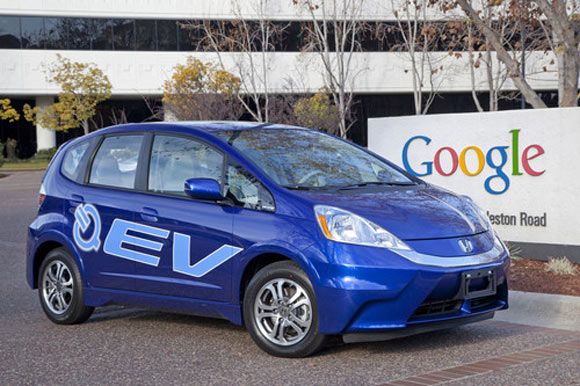
Why Crash Test Dummies Prefer Electric Vehicles (Op-Ed)

Josh Goldman is a policy analyst for clean vehicles at the Union of Concerned Scientists (UCS) where he leads legislative and regulatory campaigns to reduce U.S. oil consumption. This article was adapted from a post to the UCS blog the Equation. Goldman contributed this article to LiveScience's Expert Voices: Op-Ed & Insights.
You are probably aware that electric vehicles are clean, cheap to fuel, and an important part of our plan to reduce projected oil consumption by half within 20 years. You may not be aware, however, that you can now add another important feature to the list of electric vehicle benefits: safety.
Recently, Tesla announced that the National Highway Traffic Safety Administration (NHTSA) awarded the Tesla Model S a five-star safety rating — and, the vehicle earned the best overall test score of any vehicle NHTSA tested. While a five-star score has been attained by other vehicles, the 2013 Model S achieved an overall vehicle safety score of 0.42. This is the lowest score — and in this case lower is better — of any vehicle that NHTSA has tested under a new rating system that began in the 2011 model-year.
It's no wonder Tesla couldn't help but boast: the machine designed to test how much weight a car's roof can withstand broke after applying more than four times the force of gravity to the Model S. That's like stacking four Model S's on top of the test model without breaking the roof.
The Model S, and other electric vehicles, perform well in crash tests for a variety of reasons. First, electric vehicles don't have big engines that can slam into passengers during a frontal collision. With the electric motor in back and a trunk in the front (also known as a "frunk"), the Model S and similarly designed electric vehicles have large, frontal crash-protection crumple zones.

Also, while the weight of an electric vehicle's battery is a challenge for engineers trying to extend driving range, batteries make such vehicles more stable on the road. The Model S's 1,000-pound battery, for example, sits under the floor of the car, giving it a low center of gravity that makes it exceptionally difficult to roll over. According to Tesla, the Model S's rollover risk was rated at just 5.7 percent, and the vehicle refused to turn over via normal methods; special means were needed to induce the car to roll during testing.
And thanks to a "double bumper," car also tested well in the rear crash test: the crash-test dummies showed people would survive without permanent, disabling injury — even in the vehicle's optional, rear-facing, third row.
Sign up for the Live Science daily newsletter now
Get the world’s most fascinating discoveries delivered straight to your inbox.
We've come a long way since an electric taxi caused the first automobile fatality in Central Park on a late summer evening in 1899. Safety improvements like seat belts, airbags, and accident-avoidance computers have greatly reduced traffic fatalities even as vehicle miles have risen. Modern electric vehicles may continue this trend even further, putting another arrow in the quiver of reasons why driving on electricity is a critical part of a Half the Oil future.
This article was adapted from "This Just In: Crash Test Dummies Prefer Electric Vehicles"on the UCS blog the Equation. The views expressed are those of the author and do not necessarily reflect the views of the publisher. This version of the article was originally published on LiveScience.












